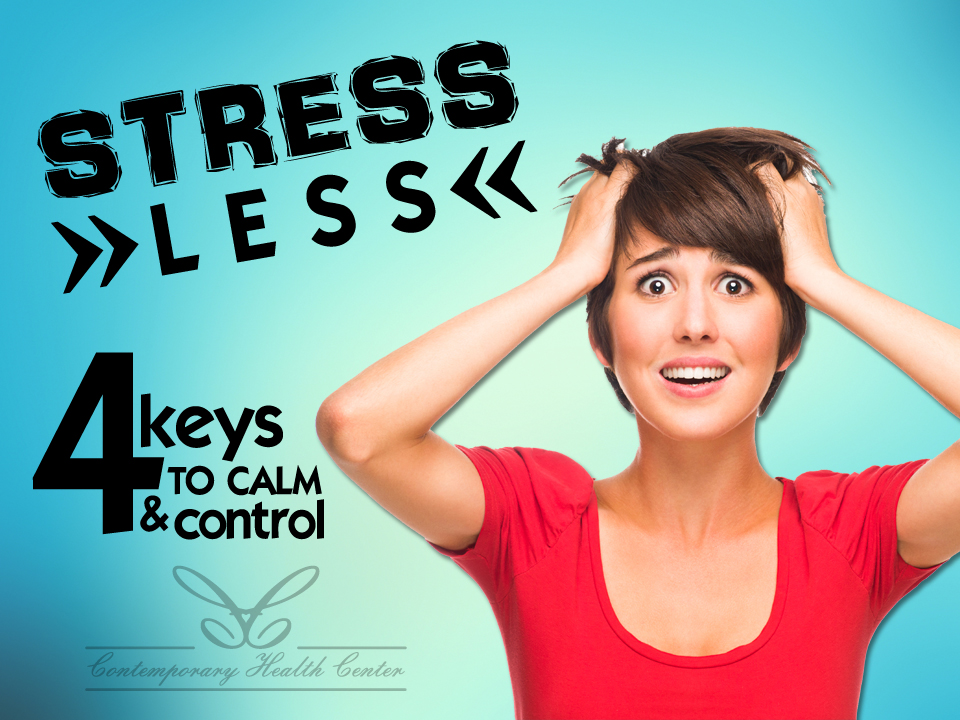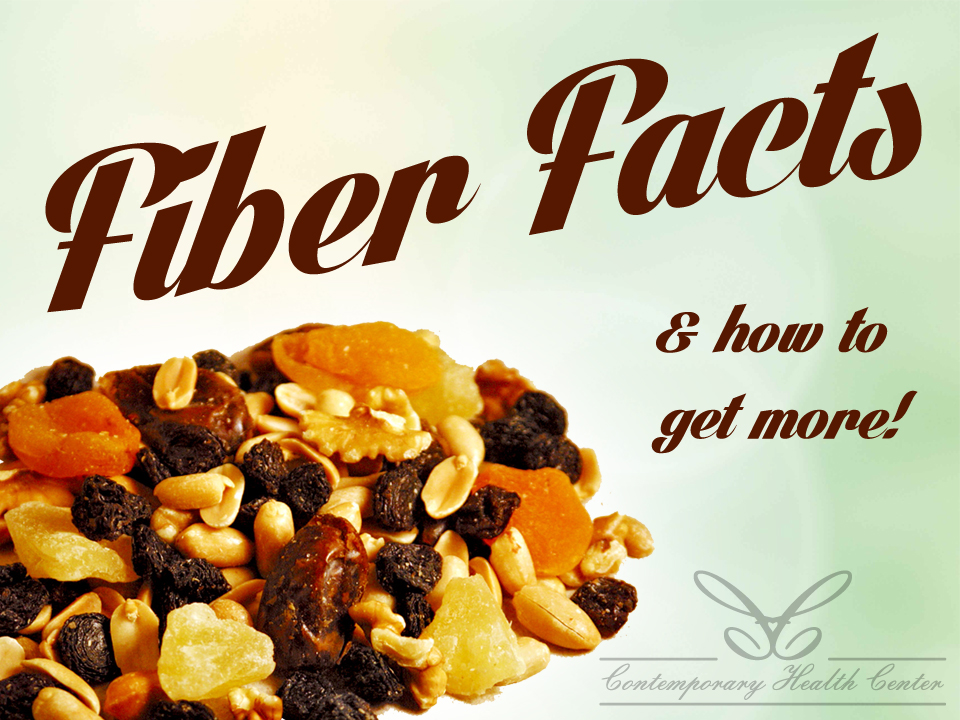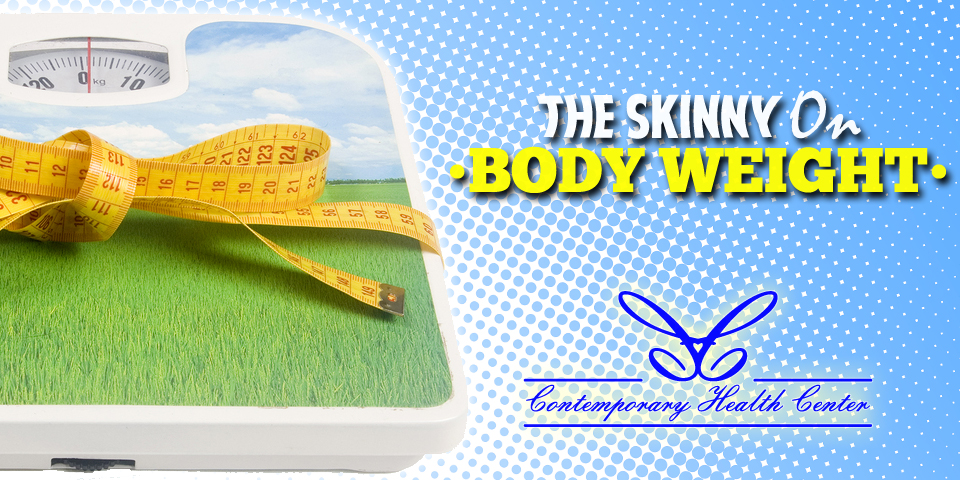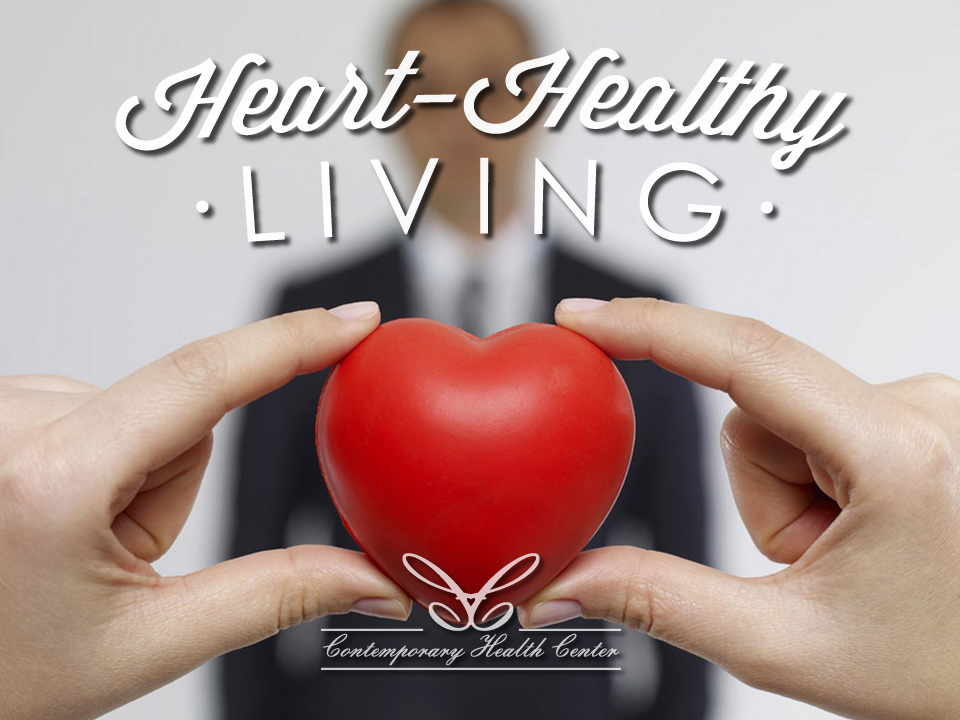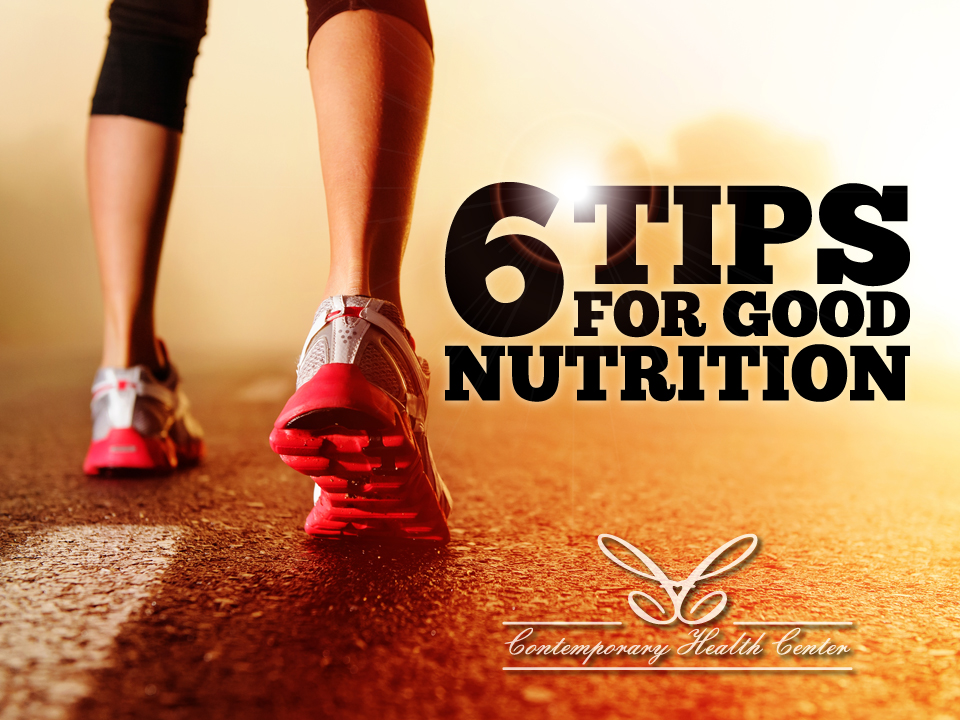At Contemporary Health Center, our mission is to help you look and feel your best. We offer a wide array of services and products to help you achieve all of your goals. But a big part of your health and wellness comes from your own life decisions. Today, we’re going to take a look at some practical ways you can manage the stress in your life.
Stress. Even the word looks worrying, doesn’t it? From bills that never stop coming to work responsibilities to balancing your family life and trying to find enough hours in the day, it sometimes feels like there’s nothing you can do about stress. The good news is you might have more control than you think! We’re going to take a look at 4 Keys to coping with stress in healthy ways.
Step 1 – Identify
The reality is many of us don’t slow down enough to take a good look at all the different parts of our lives. It may seem a bit obvious to suggest that we “identify” the stressors, but it’s not always as easy as it sounds. In fact, sometimes the TRUE causes of stress may be just under the surface of a situation or environment.
As you begin to think through and choose the stressors in your life, it’s important that you take an honest look at your habits, excuses and attitudes. A great way to begin and support this process is a stress journal. Make entries daily or multiples times daily. Keep track of what caused you stress (or make a guess if you’re not totally sure), journal how you felt in that situation both physically and emotionally, write down how you acted and what you did to make yourself feel better.
Accept responsibility for the role you play in creating or maintaining stress. Otherwise, your stress level will remain outside your control.
Step 2 – Inventory
Think about the ways you currently manage the stress in your life. While a stress journal is great for identifying stressors, it’s important that your coping strategies are healthy and productive. A personal inventory of your stress “tools” is the next step in the process.
Actions like smoking, use of pills or drugs, oversleeping, drinking too much alcohol, overworking, withdrawing from family and friends or lashing out are all examples of coping strategies that are little more than short-term solutions to a long-term problem.
As you begin to understand the ways in which you’ve been dealing with stress, it’s important that you move toward keeping your reactions healthy. Since every life and stressor is different, there really isn’t a “master key” in handling stress. Instead, you’ll have to decide how best to apply healthy coping strategies.
Step 3 – Manage
In every stressful situation, there are really only two things you’re able to do – either change the situation, or change your reaction to the situation.
If you decide that changing the situation will produce the best results, decide how you will do that. Will you avoid the stressor or will you alter the stressor? Here are some tips for changing your stress situation:
Avoiding
– Learn how to say “no.” Know your limits and stick to them.
-Avoid polarizing conversation. If certain political opinions or religious conversations stress you out, make it a point to not discuss them.
-Be realistic about your to-do list. If there’s too much on your plate, be sure and distinguish between the things you “should” do and the things you “must” do.
-Take control of your environment. If traffic drives you crazy, take the scenic route home. If the mall stresses you out, do some shopping online.
– Avoid situations (or people) that stress you out. Steer clear of environments that consistently cause you stress.
Altering
-Be willing to compromise. This is an extremely valuable life tool. Finding middle ground can take considerable stress out of relationships.
-Manage your time better. The more you’re taking on and the thinner you’re being spread; the harder it is to stay focused and calm. Plan ahead and don’t overextend yourself.
-Be more assertive. Face your problems head on. Do your best to anticipate and prevent them, but don’t take a backseat in your own life.
-Express yourself. Bottling feelings up is never a good idea. Eventually, that pressure just has to explode. If someone or something is bothering you, communicate those feelings in a respectful and open manner.
In the same vein, changing your reaction requires a decision as well. Will you adapt to the stressor or will you accept the stressor? Here are some tips for changing your reaction to stressors:
Adapting
-Focus on the positive. If stress is beating you down, take some time to reflect on all the good things in your life. This is a great first step in gaining perspective.
-Find the ‘Big Picture.’ Ask yourself whether this situation will be important in the long run. Will this matter in a month or a year? Is this worth getting upset over? If the situations don’t merit your concern, focus time and energy elsewhere.
-Adjust your standards. A major source of avoidable stress is perfectionism. Don’t set yourself up for failure by demanding absolute perfection. Be reasonable with your standards.
Acceptance
-Know the uncontrollable. Accept that many things in life are beyond your scope of control, most notable are the behaviors of others. Instead of stressing out over those things, focus on the things you can control.
-Share your feelings. For most people, the simple act of just expressing feelings is the most beneficial. Even if there’s nothing you can do to alter a situation, talk to a trusted friend or family member.
-Look for the upside. Try and think of challenges as opportunities rather than encumbrances. Always be learning from your own mistakes.
-Learn to forgive. The fact is, we live in an imperfect world and people do make mistakes. Free yourself from negativity, anger and resentment by forgiving and moving forward.
Step 4 – Recharge
The value of fun and relaxation really can’t be overstated. After you’ve achieved a take-charge approach and positive attitude, make time to “unplug” and break from the hustle of everyday life.
This doesn’t mean you have to schedule a beach vacation once a month. Take a few minutes to go for a walk, savor a good cup of tea, play with your dog, work in your garden, enjoy a hot bath, watch a funny movie or make time for a long phone call to a good friend.
Set this relaxation time aside. Your daily schedule should include rest and relaxation. Keep this time sacred! Don’t allow any other obligations to push into this time. And during your “recharge” time, do things you enjoy.
In addition to regular exercise, healthy diet, and proper sleeping habits, experiment with different techniques and try to focus in on what makes you feel calm and in-control. Implement these strategies at your own pace and watch as your quality of life soars!
